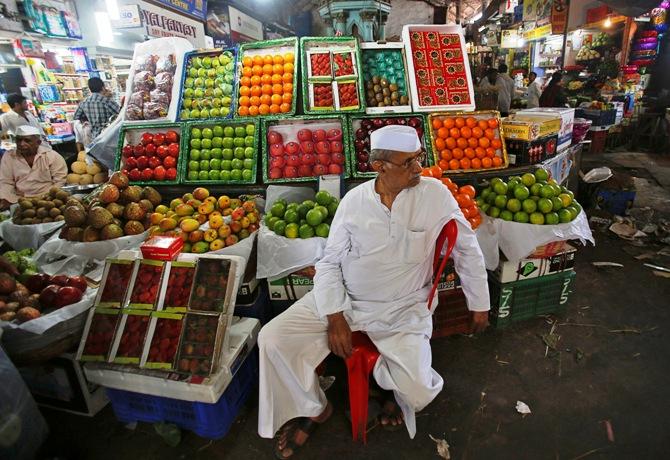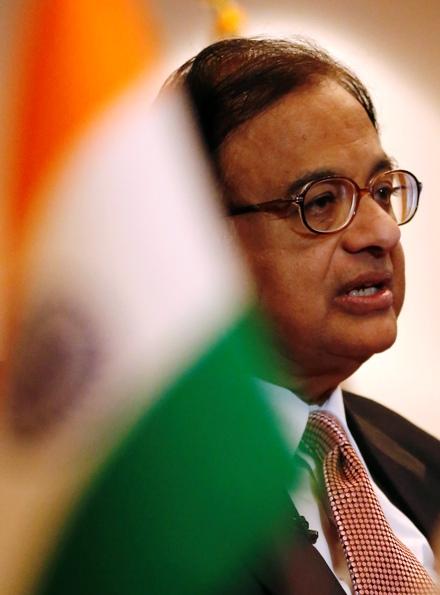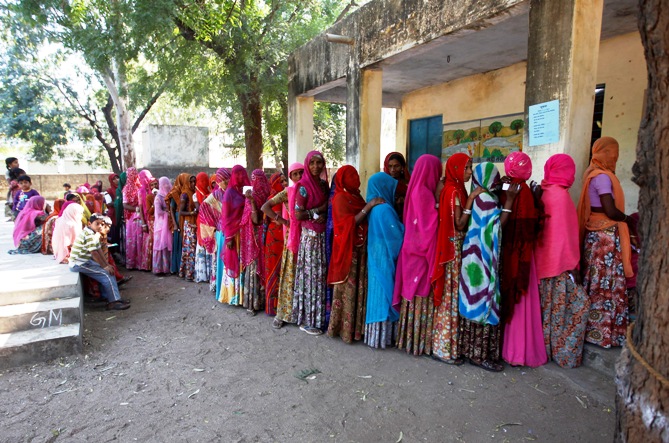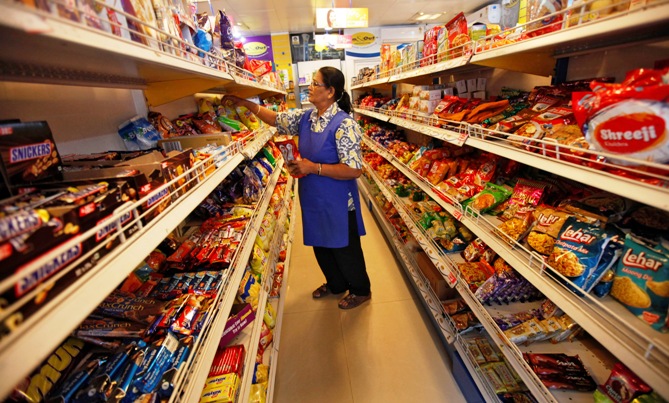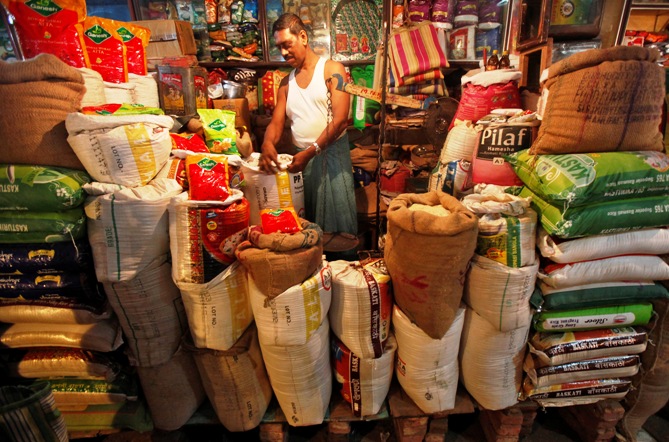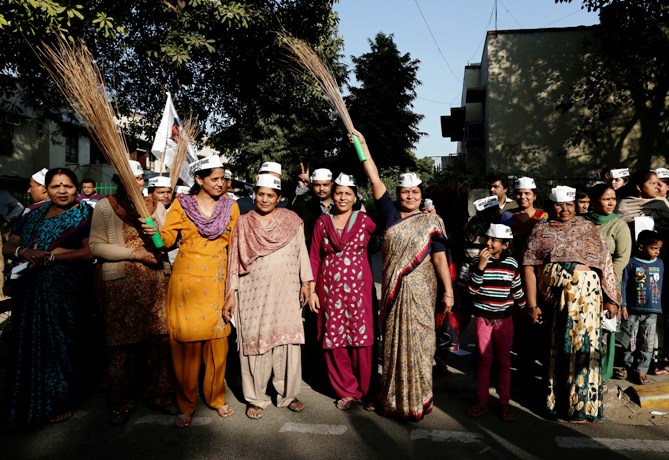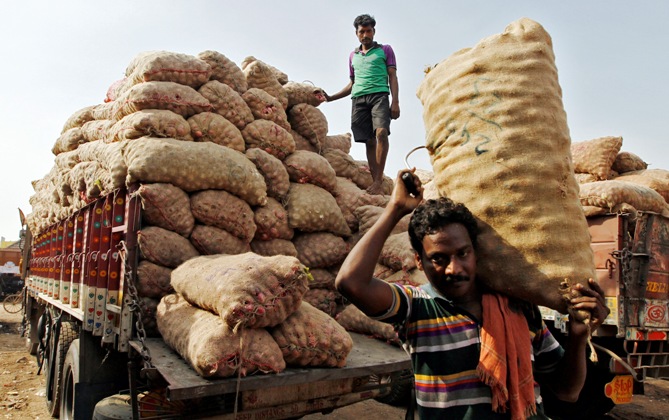 | « Back to article | Print this article |
Inflation, polls to determine economic outlook for 2014
For the Indian economy and markets, 2013 has been tough.
Though the fact that benchmark indices touched new highs brought some cheer, the country faced strong headwinds since May, owing to market expectations the US Federal Reserve would start tapering asset purchases in September and raise the policy rate earlier than expected.
The rupee’s slide against the dollar and the burgeoning current account deficit added to the woes.
Despite the headwinds, the economy and equity markets managed to muddle through.
At the turn of the year, most brokerages have started crystal gazing and extrapolating the Assembly election results to the outcome of the 2014 general elections.
Click NEXT to read further. . .
Inflation, polls to determine economic outlook for 2014
This, in turn, will be an indicator of how key economic policies are shaped. In most countries, general elections are, to a great extent, a comment on the performance of the incumbent government, with development and economic growth key criteria.
In a November 28 report, Goldman Sachs senior economist Andrew Tilton said, “We think 2014 will likely be a transition year for India.
“This is primarily due to the important Parliamentary elections expected in April-May 2014.
“Greater reform momentum, combined with a removal of uncertainties, could propel the economy forward and improve its diminishing growth potential.”
Click NEXT to read further. . .
Inflation, polls to determine economic outlook for 2014
“On the other hand, an unclear verdict or a weak government could potentially continue the drift in economic performance.
“Key to watch will be developments in inflation and investment.
“The former will determine the amount of RBI (Reserve bank of India) tightening and the trajectory of macro imbalances; the latter will be key for growth and investment opportunities,” he adds.
Garry Evans, global head of equity strategy at HSBC, suggests while elections usually involve the risk of policy paralysis, India received a wakeup call this summer when currencies saw rapid depreciation.
“In India, the central bank has also been actively adjusting to the currency weakness and the current account deficit.
Click NEXT to read further. . .
Inflation, polls to determine economic outlook for 2014
“But other fiscal deficit remains an issue.
“Thus, structural imbalances and election uncertainty would keep the outlook for 2014 cloudy, in particular in India,” he says.
Chetan Ahya, Asia-Pacific economist at Morgan Stanley believes 2014 will mark a year of rehabilitation for India’s economy and their base case.
He expects gross domestic product growth to remain 4.8-5 per cent until March 2014 and then gradually recover above 5 per cent by quarter ending September 2014.
“We believe that a meaningful recovery in private capex, government spending or private consumption will be difficult to achieve over the next 6-12 months while policymakers focus on improving macro stability indicators such as inflation, the current account deficit, and the gap between loan growth and deposit growth,” he says.
Click NEXT to read further. . .
Inflation, polls to determine economic outlook for 2014
As regards investing, Ridham Desai, Sheela Rathi and Utkarsh Khandelwal in their India Equity Strategy report dated December 2 suggest that portfolios should hug the benchmark.
“The choice between defensives and cyclicals needs to be more idiosyncratic, given the macro underpinnings.
“We are market-cap agnostic.
“Our big sector call is to underweight Financials and overweight technology,” they say.
So, what is the road ahead for the Indian economy?
If the past is any indicator, a mix of caste, religion and language will play a key role at the local level.
Click NEXT to read further. . .
Inflation, polls to determine economic outlook for 2014
Extrapolating local trends to a national level, while easy, distorts the reality and often fails to capture the complete picture, analysts say.
Based on manifestos of previous elections, the state elections this year and discussions with senior leaders, Dhananjay Sinha, head of institutional research at Emkay Global Financial Services, believes there will be little change in the broader policy framework, even with a Bharatiya Janata Party-led government at the Centre.
However, Goldman Sachs expects the Indian economy to accelerate gradually through the next few years, with real gross domestic product growth rising to 5.5 per cent in FY15 due to higher exports and an increase in investment demand.
Its inflation estimate is more than the consensus forecast, with FY15 Consumer Price Index-based inflation estimated at 8.3 per cent and the forecast for Wholesale Price Index-based inflation at 6.3 per cent, driven by increases in administered prices and elevated inflation expectations.
For the rupee, the entity’s three/six/12-month forecasts are 64, 65, and 65 a dollar, respectively.
Click NEXT to read further. . .
Inflation, polls to determine economic outlook for 2014
Santosh Singh, an analyst with Espirito Santo Securities, says fundamentals of the economy, as well as companies, should remain focus areas.
He says irrespective of the election results (excluding the possibility of a third front government), it will be neutral to positive from here.
Jitendra Sriram, equity strategist and head of research (India) at HSBC, expects Indian equities to deliver below-average returns of three per cent next year. Earnings are likely to increase 8-10 per cent, he adds.
HSBC has also slashed its estimate for gross domestic product growth -- from 5.5 per cent to four per cent for FY14 and from 6.6 per cent to 5.5 per cent for FY15.
“We believe the Street’s estimate of 16 per cent earnings growth in 2014 looks too optimistic and we should see further earnings downgrades due to weaker domestic demand and higher interest rates.
“We are underweight (on) India in the region context, with a Sensex target of 21,750 for 2014-end,” Sriram says.
